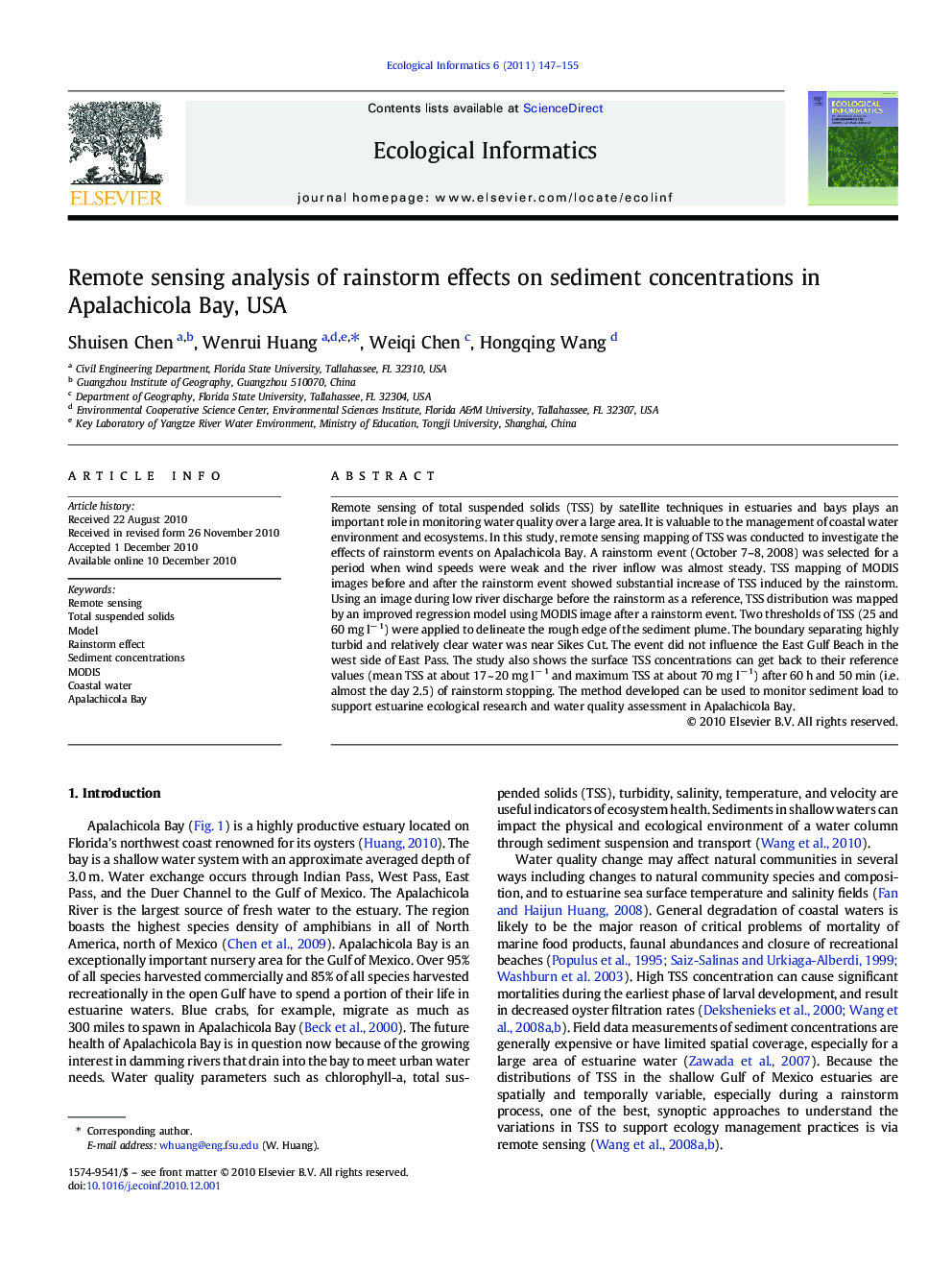| Article ID | Journal | Published Year | Pages | File Type |
|---|---|---|---|---|
| 4375173 | Ecological Informatics | 2011 | 9 Pages |
Abstract
Remote sensing of total suspended solids (TSS) by satellite techniques in estuaries and bays plays an important role in monitoring water quality over a large area. It is valuable to the management of coastal water environment and ecosystems. In this study, remote sensing mapping of TSS was conducted to investigate the effects of rainstorm events on Apalachicola Bay. A rainstorm event (October 7-8, 2008) was selected for a period when wind speeds were weak and the river inflow was almost steady. TSS mapping of MODIS images before and after the rainstorm event showed substantial increase of TSS induced by the rainstorm. Using an image during low river discharge before the rainstorm as a reference, TSS distribution was mapped by an improved regression model using MODIS image after a rainstorm event. Two thresholds of TSS (25 and 60 mg lâ 1) were applied to delineate the rough edge of the sediment plume. The boundary separating highly turbid and relatively clear water was near Sikes Cut. The event did not influence the East Gulf Beach in the west side of East Pass. The study also shows the surface TSS concentrations can get back to their reference values (mean TSS at about 17 ~ 20 mg lâ 1 and maximum TSS at about 70 mg lâ 1) after 60 h and 50 min (i.e. almost the day 2.5) of rainstorm stopping. The method developed can be used to monitor sediment load to support estuarine ecological research and water quality assessment in Apalachicola Bay.
Keywords
Related Topics
Life Sciences
Agricultural and Biological Sciences
Ecology, Evolution, Behavior and Systematics
Authors
Shuisen Chen, Wenrui Huang, Weiqi Chen, Hongqing Wang,
